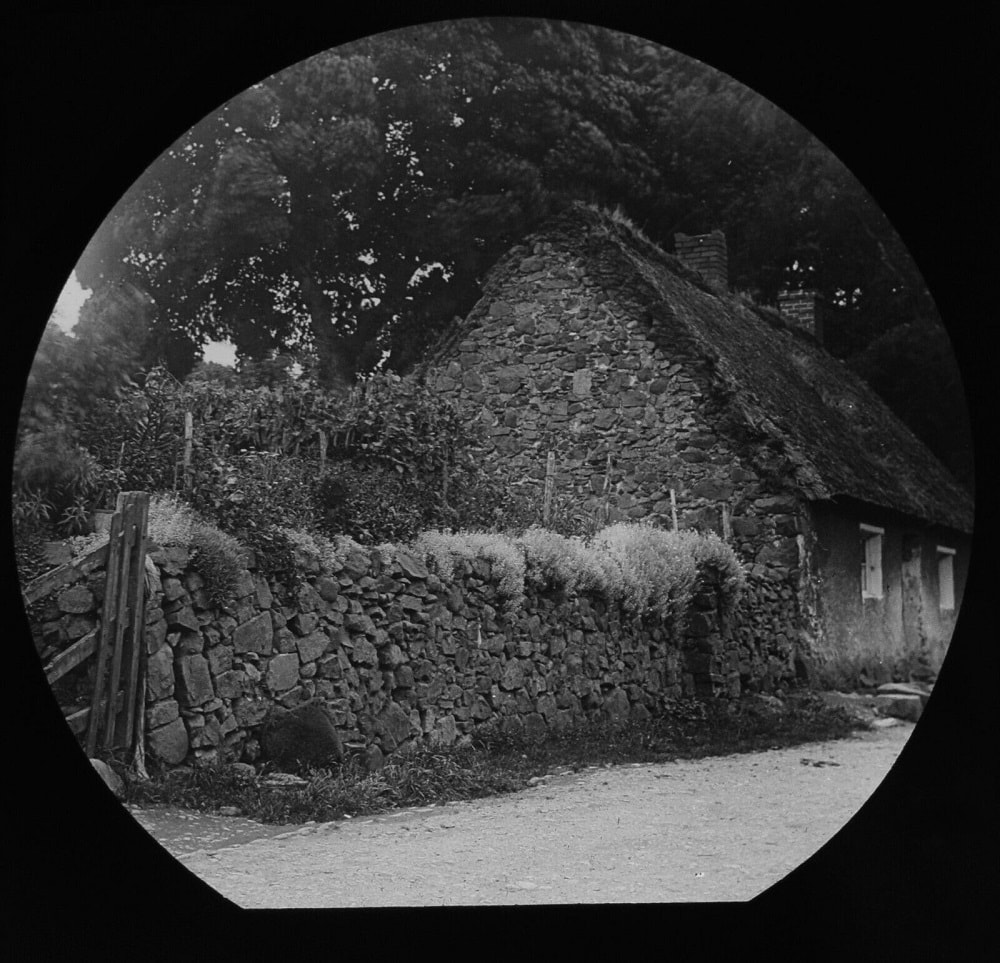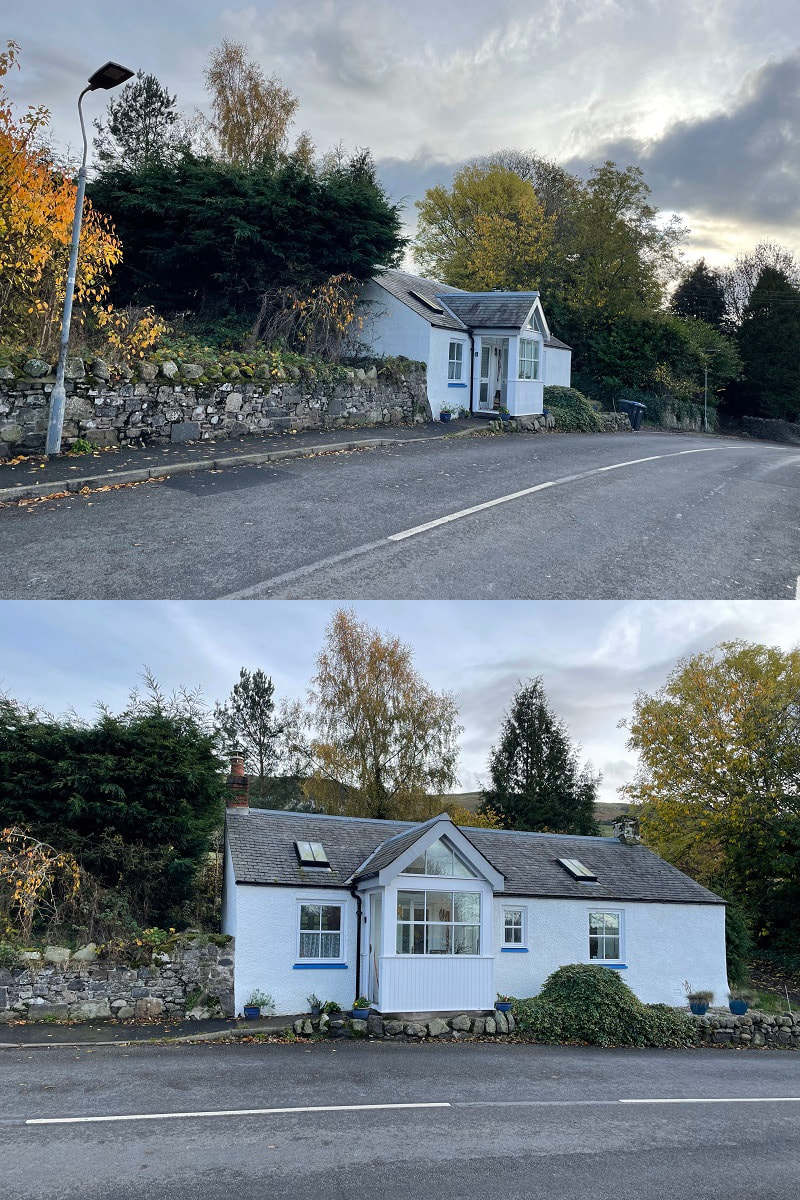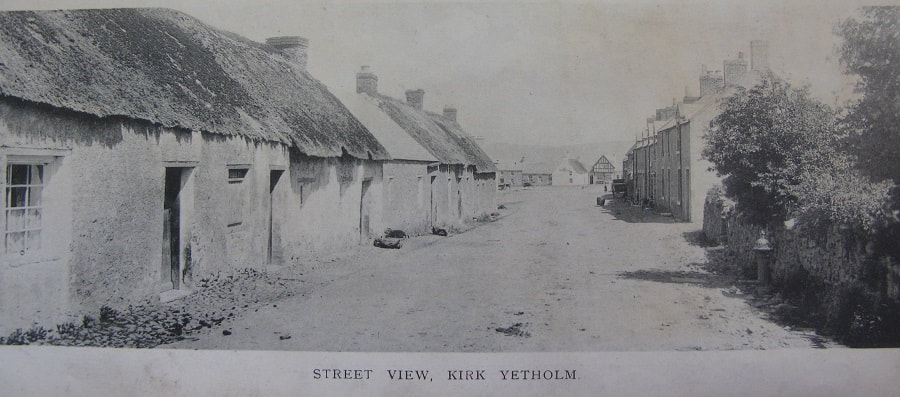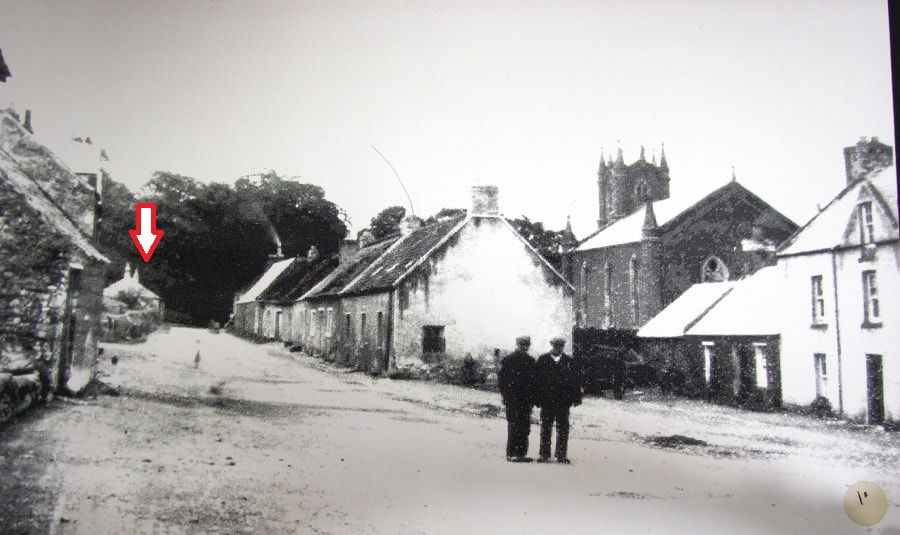 Yetholm History Society recently acquired the glass slide image shown above. It is inscribed in one corner 'Yetholm' - and the cottage is certainly similar to many that were once found in the village and all across the Borders and Northumberland. But, if it is from Yetholm, which cottage is it? So far, the best guess, is that it shows an earlier incarnation of Wynstae Cottage, which stands on its own, opposite the gates of the kirk. Today this building is whitewashed, with a porch, modern windows and a slate roof - see the images below. Clearly the cottage has changed a lot - if this guess is correct - but the same could be said for most of the buildings in Yetholm. Probably the image on the slide was taken in the first decade of the 20th-century. Several postcard photographs of this area in Kirk Yetholm were taken at this date, but most were shot from outside the cottage's front door, looking towards the Border Hotel, with the photographers back to the cottage in question. The photographers were keen to capture the row of picturesque (but increasingly dilapidated) thatched cottages on the other side of the road - see image below, which appeared in an album of collotype photographs published by Gibson of Coldstream. This much photographed row of cottages looked out onto a plot of allotment land, the retaining wall of which can be seen on the right. Today the shells of these cottages are still standing, as is the area of allotment land. The earth behind this wall stands a couple of feet above the level of the roadway and Wynstae Cottage is built into it. The cottage shown in the glass slide is similarly wedged into the banked earth and it seems likely that the retaining wall shown in the slide is the same as that shown in Gibson's collotype.
The cottage shown in the glass slide looks as if it may once have been longer - the edge of the thatch has perhaps been torn away at some point. Also note that it has two chimneys - one centrally placed and the other at the far end. Wynstae cottage today has a chimney at either end. However, the chimney at the far end of the glass slide image looks very similar to the chimney that can be found in the same position today. It is interesting, too, that today's cottage has retained what looks like one of its original windows, to the right of the door - this may be a survival from the earlier version of the cottage. The first detailed Ordnance Survey map of Kirk Yetholm (1859) shows that a building was standing was on the site at that date. Has anyone got a better identification for the mysterious glass slide...? Or has anyone got other early images of Wynstae Cottage that would help to firm up this hypothesis? As already mentioned, most photographs of this area were taken looking in the opposite direction. One of the few we have in which Wynstae Cottage can be glimpsed, albeit distantly, is shown below. Judging by the clothes of the men in the foreground it was taken in the 1930s and it looks as if, by this date, the cottage has been modernised to something approaching its appearance today - the pitch of the roof is shallower than in the glass slide image, appropriate for a building that has been tiled. Several of the cottages on the other side of the street have been similarly renovated, with tile roofs, in an attempt to drag them into the twentieth century. Sadly, that plan failed and today the ruined buildings are an eyesore. Only Wynstae Cottage is still lived in.
1 Comment
|
Archives
July 2024
|



 RSS Feed
RSS Feed
